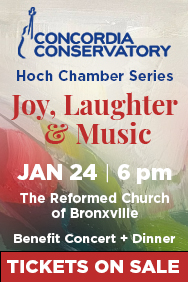Robert Riggs Discusses 'Out of the Wilderness,' New Book on Eastchester's 350 Years of History
Written by Robert Riggs, Co-Chair, Steering Committee, Eastchester 350th Anniversary, Inc.

Jan. 7, 2015: At last a history of the Town of Eastchester that is more than a bland summary of town celebratory material or a section of a century-old Westchester treatise. Eloise Morgan, Bronxville Village historian, Richard Forliano, Town of Eastchester historian, and thirteen other local historians have authored a poignant, informative, and comprehensive history of one of the oldest colonial towns in the county, a narrative that traps the reader amid many colorful and beautifully reproduced maps, illustrations, and photographs.
The maps alone (30 are listed in the index) tell a remarkable tale of 350 years of change from a wilderness with only a smattering of farms into a suburban community, bound on the west by the Bronx River and on the east by "Hutchinson's River." I do not recall any other book for which I spent the first 30 minutes absorbed in study of the front and back endpapers: 1881 and 1900 maps of Eastchester that show the town in midstream as it changed from clusters of farms to developed communities growing along the Harlem Division train tracks.
What fun picking out the roads, rivers, and crossings and the homes of Mary Dusenberry and siblings Alexander, Jr., Robert, and John Masterton, Frank Chambers, William Van Duzer Lawrence, and Samuel Fee, all important nineteenth-century community leaders whose properties lay next to early subdivisions such as Lawrence Park and Gifford Park.
Mixed with the text are other fascinating maps that show, for example, the Tuckahoe marble quarries active in 1868, the movement of British and Colonial troops north to White Plains and then back out following the battle there in October of 1776, and, most edifying, the evolving borders of the town, starting with its settlement in 1664, expansion into modern Eastchester, Tuckahoe, and Bronxville in the first decades of the eighteenth century, and then its diminishment from the incorporation of Mount Vernon in 1892 and the annexation of its southern end by New York City in 1895.
Evolving Borders
A brilliant first chapter by Morgan titled "Evolving Borders" clearly and concisely narrates the 350-year story of town expansion and diminution. She notes the irony of celebrating the 350th anniversary when the original town was settled in 1664 by Connecticut families on a tract now near St. Paul's Church National Historic Site in Mount Vernon that is no longer part of the town.
Then follows the tangled history, post 1664 and under five British sovereigns and their governor generals. The stability and reach of the town faced competing claims by a neighboring township (now dissolved Town of Westchester), wealthy New York political figures, and, most important, native Indians. Finally, by 1730 the town was able to control nearly 7,000 acres stretching south from Scarsdale and between the two rivers to what is now part of the Bronx.
As Morgan and Forliano note in the preface, the book makes "few references to Native Americans," saving that subject for another time. The book does describe the proceedings incident to the signing of a deed to Eastchester in 1700 by three Mohican chiefs, as witnessed by "Sachem Gramatan." Morgan concludes that, "contrary to legend, Gramatan was not a seller of the land," belying the "unfounded claim that Chief Gramatan sold Eastchester to the white man in 1666, and did so, no less, on Sunset Hill," as represented on a 1936 plaque still displayed on Sunset Hill, formerly the site of the Hotel Gramatan in Bronxville.
"Evolving Borders" offers as well a comprehensive analysis, the first in this reader's knowledge, of the developments that led to the incorporation of the villages of Bronxville and Tuckahoe in 1898 and 1902, respectively. The history is a familiar story of corruption of municipal officials and the taxation of geographical areas within the town that went well beyond the services provided by the town.
Enslavement
Marilynn Wood Hill authors what must be regarded as a definitive account of the history of the enslaved and free African Americans in Eastchester from 1664 to 1870. She reminds us that the assumptions underlying the Eastchester 1665 Covenant, that the community is to be based on "good will toward all humanity, kindness, equality, fairness, honesty, shared burdens and economic sensibility," did not extend to slaves, noting that a year earlier, officials in New York (then New Amsterdam) were signing vessel documentation evidencing the transport of slaves (that is, those who had survived the voyage from West Africa) up the Atlantic coast.
By researching census records and other source material, she finds that Eastchester, from the earliest days of the town and like other areas in New York, was the residence of African Americans representing a significant portion of the population. She traces the history of their presence as slaves and in some cases as "free" African Americans and the continuation of slavery in the town through the early decades of the nineteenth century. Her epilogue points out that by 1870, the African American population was only one percent of the town's population but that racism represented a strong force in the community and would take another century to reflect the civil rights effort to match the promise of the 1665 Covenant with reality.
Diversity
Appropriately, Forliano's chapter on the town's transformation in the first three decades of the twentieth century tracks the changing populations as Irish immigrants, and then Italian immigrants, moved to the town. Many of them came to work the marble quarries in Tuckahoe and northern Eastchester. Indicative of the felt separateness of the two nationalities, two of the four surviving marble landmarks in Eastchester are Catholic churches built within a mile of one another. The churches, both dedicated in 1912, were clad in local marble largely through the labor of parishioners, predominantly Irish in one case and Italian in the other. As recorded by Forliano, however, "with passage of time changing social mores, and anti-discrimination legislation, ethnic tensions and exclusionary practices in the communities of Eastchester would be reduced or eliminated."
The book is truly remarkable for its depth, comprehensiveness, and accuracy. Other chapters recite the short life and shocking end of Anne Hutchinson in what became Eastchester, the facts surrounding the 1733 Eastchester election that was not, as sometimes advertised, the "Birth of the Bill of Rights," and other pointed topics that inform Eastchester history.
The book concludes with a 350-year timeline that nicely sums up in words, copied documents, and photographs "The Emergence of Eastchester, Tuckahoe and Bronxville, NY – 1664-2014."
Pictured here: The cover of Out of the Wilderness: The Emergence of Eastchester, Tuckahoe and Bronxville, NY – 1664-2014, the image of which was taken from an early twentieth century postcard.
Government & History Directory
Bronxville is a quaint village (one square mile) located just 16 miles north of midtown Manhattan (roughly 30 minutes on the train) and has a population of approximately 6,500. It is known as a premier community with an excellent public school (K-12) and easy access to Manhattan. Bronxville offers many amenities including an attractive business district, a hospital (Lawrence Hospital), public paddle and tennis courts, fine dining at local restaurants, two private country clubs and a community library.
While the earliest settlers of Bronxville date back to the first half of the 18th century, the history of the modern suburb of Bronxville began in 1890 when William Van Duzer Lawrence purchased a farm and commissioned the architect, William A. Bates, to design a planned community of houses for well-known artists and professionals that became a thriving art colony. This community, now called Lawrence Park, is listed on the National register of Historic Places and many of the homes still have artists’ studios. A neighborhood association within Lawrence Park called “The Hilltop Association” keeps this heritage alive with art shows and other events for neighbors.
Bronxville offers many charming neighborhoods as well as a variety of living options for residents including single family homes, town houses, cooperatives and condominiums. One of the chief benefits of living in “the village” is that your children can attend the Bronxville School.
The Bronxville postal zone (10708, known as “Bronxville PO”) includes the village of Bronxville as well as the Chester Heights section of Eastchester, parts of Tuckahoe and the Lawrence Park West, Cedar Knolls, Armour Villa and Longvale sections of Yonkers. Many of these areas have their own distinct character. For instance, the Armour Villa section has many historic homes and even has its own newsletter called “The Villa Voice” which reports on neighborhood news.
Link to Village of Bronxville One Square Mile Monthly Newsletter
Village of Bronxville Administrative Offices
337-6500
Open 9:00am - 4pm excluding holidays and weekends
Bronxville Police Department
337-0500
Open 24 hours
Bronxville Parking Violations
337-2024
Open 9:00am - 4pm excluding holidays and weekends
Bronxville Fire Deparment
793-6400











